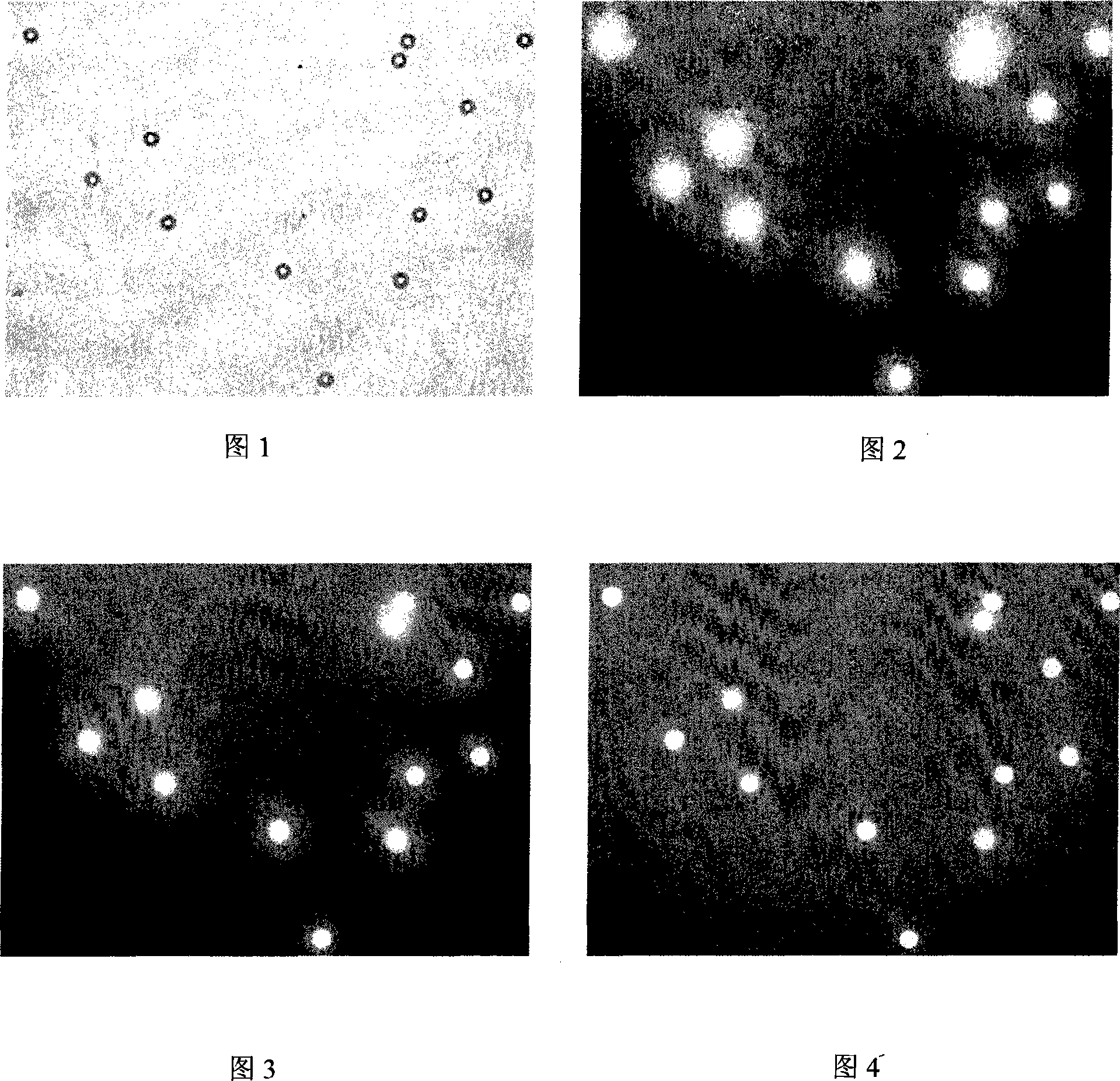Method for dyeing fluorescent microballons
A dyeing method and technology of fluorescent microspheres, which are applied in the field of analysis and separation of materials, can solve the problems of difficult flow cytometry analysis, inactivation of fluorescein, and small particle size, and achieve a wide range of fluorescence emission spectrum, particle size and fluorescence intensity. Uniform, small relative standard deviation effect
- Summary
- Abstract
- Description
- Claims
- Application Information
AI Technical Summary
Problems solved by technology
Method used
Image
Examples
Embodiment 1
[0025] Take 0.001g of fluorescein isothiocyanate, and 0.01g of cross-linked polystyrene microspheres with a particle size of 5 microns and a relative standard deviation of less than 2% (available on the market, such as Tianjin Basel Chromatography Technology Development Center). Add 0.1g of dimethyl sulfoxide to the fluorescein and microspheres to infiltrate the fluorescein and polystyrene microspheres, and then add 9.889g of chloroform, mix well, and dye for 12 hours in the dark at 1kPa. The dyed polystyrene The ethylene microspheres were taken out and washed several times. The relative standard deviation of the fluorescence intensity of the obtained microspheres is 4%, the analysis brightness on the flow cytometer is between 2000-2200, and the fluorescence emission spectrum range is between 500-530nm.
Embodiment 2
[0027] Take 8g of acridine orange, 0.01g of silica gel microspheres with a particle size of 5 microns and a relative standard deviation of less than 10%, and add 0.1g of N and N-dimethylformamide to the fluorescein and microspheres to infiltrate the fluorescein and silica gel microspheres. After balling, add 1.89g of water, mix well and dye for 1h in the dark at 50kPa, take out the dyed silica gel microspheres, and then wash several times. The relative standard deviation of the fluorescence intensity of the obtained microspheres is 15%, the analysis brightness on the flow cytometer is between 5000-10000, and the fluorescence emission spectrum range is between 500-600nm.
Embodiment 3
[0029] Take 0.1g of acridine yellow, 8g of cross-linked polyacrylic acid microspheres with a particle size of 5 microns and a relative standard deviation of less than 4%, add 1.9g of ethanol to the fluorescein and the microspheres, mix well, and dye for 24h in the dark at 101kPa , Take out the dyed polyacrylic acid microspheres, and then wash several times. The relative standard deviation of the fluorescence intensity of the obtained microspheres is 5%, the analysis brightness on the flow cytometer is between 50-100, and the fluorescence emission spectrum range is between 500-650 nm.
PUM
| Property | Measurement | Unit |
|---|---|---|
| particle diameter | aaaaa | aaaaa |
| particle diameter | aaaaa | aaaaa |
Abstract
Description
Claims
Application Information
 Login to View More
Login to View More - R&D
- Intellectual Property
- Life Sciences
- Materials
- Tech Scout
- Unparalleled Data Quality
- Higher Quality Content
- 60% Fewer Hallucinations
Browse by: Latest US Patents, China's latest patents, Technical Efficacy Thesaurus, Application Domain, Technology Topic, Popular Technical Reports.
© 2025 PatSnap. All rights reserved.Legal|Privacy policy|Modern Slavery Act Transparency Statement|Sitemap|About US| Contact US: help@patsnap.com

